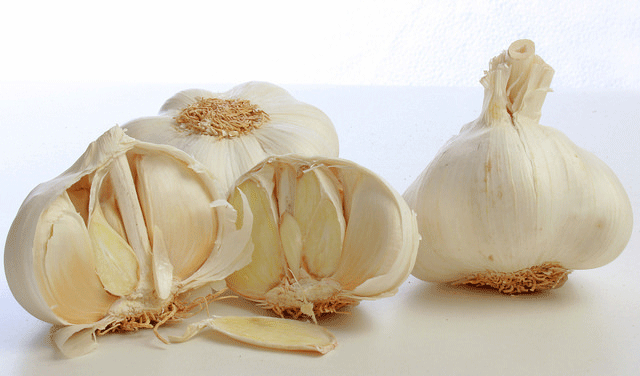The ‘mother’ garlic plant is a composite bulb consisting of many smaller wedgeshaped ‘daughter’ bulbs each of which may be referred to as a ‘clove’. The single clove is the propagule used to produce a single plant in the following crop or generation.
There are two main types of garlic: (i) the hard-neck; and (ii) the soft-neck. There are many clonal selections of each based on number of cloves, overall bulb size and pigmentation.
Quality of planting material
There has been increased interest in recent years in the provision of pest- and pathogen-free garlic planting material for small farmers (FAO, 2010). In the case of garlic the main pathogens which can be transmitted via planting material are:
- onion yellow dwarf virus (OYDV);
- garlic yellow streak virus (GYDV); and
- leek yellow stripe virus (LYSV).
Mosaic in garlic, which shows as leaf chlorosis, especially in young leaves, can be transmitted from plant to plant by aphids or via infected mother bulbs in the planting material. Individual plants showing symptoms should be removed from the field crop, especially if intended for further multiplication for retention as planting material.
Field requirements
As with other vegetable alliums, crop rotation should be followed closely as there are several economically important soilborne pests and pathogens.
Garlic grows best in cool soils and this is usually achieved by mulching after planting; temperatures up to 30°C are suitable when the cloves have become established
Planting patterns and densities depend on local irrigation methods and weed control. It is common practice to grow the crop in beds the centres of which can be conveniently reached from either side; this is particularly important for efficient hand weeding.
The cloves are planted vertically, in firmed beds, so that the top of the clove is just below the soil surface, at 10–15 cm within the rows and 30 cm between the rows.
The crop should be kept weed free, especially in its early stages as the leaves do not form a canopy to suppress indigenous weeds
Harvesting and storage
When the crop is approaching maturity, usually 3–4 months from planting, the leaves start to die back from their leaf tips, the neck weakens at the base and topples over. Some growers accelerate the drying-off process by pushing the foliage over. Following lifting, the plants are dried under cover on raised nets or mesh in an airy and rain-free shelter. Sun drying is ideal, although care should be taken to ensure that they are not left out in rainy conditions.
When the crop has dried off, the bulbs are cleaned by hand and any remaining dry foliage and stems removed.
The cleaned bulbs can be stored at approximately 25°C and relative humidity of less than 70% for about 3 months.


